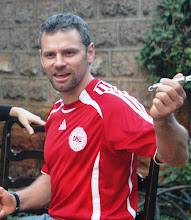Slum Life Part II: Family Finance Principles
What is life like in a slum? Some residents are middle class with income from businesses or rental properties—and live there because the place has become home. They enjoy the bustle, the good prices, the constant movement and easy contact with people. Population is so dense there might be 1000 people living within 50 yards. That makes for an active social life!
Other residents sleep like goats on the street or someone’s veranda, and walk to town each day “looking for money.” Many have small businesses selling vegetables or used clothes.
Some slum residents have steady, regular employment, but unemployment is extremely high. When I verbally posted a job opportunity here at the guest house, I said I was paying $100 per month, and within a week I had had 6 or 8 resumes on my desk. People with experience and training! I selected the best and pay him twice that amount. Is that lying?
If you are lucky enough to have a steady job, you will probably make about 100 dollars. Some are more, some are less, but an average decent, steady job should pay around 300 shillings or $4.50 per day. If you are really desperate, you can work for City Council sweeping the streets or being a parking meter. You will make about $50 per month—about as much as it takes for a bus in and out of town each day.
And this will be your monthly family budget, if one person has a good job making $100 per month.
- $20 rent—one room a bit bigger than your bathroom, in a decent part of the slum
- $15 average--a bus one way to work—you walk 1-2 hours the other way to save money
- $15 10 kilos of maize flour to make ugali
- $10 one half pound of meat once a week
- $10 charcoal for cooking and boiling water
- $5 15 minutes of cell phone time to keep in touch with family
- $3 a bunch of greens every day
- $2 a couple of buckets of water every day for cooking, drinking, washing and laundry
That leaves $20 per month for school fees, medical expenses, family outings, emergencies, funerals, offerings at church, and contributing to the needs of your family members who might not have work.
Anyone want to come teach a budgeting class?




